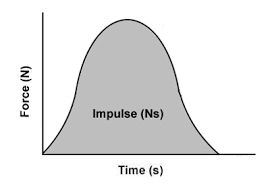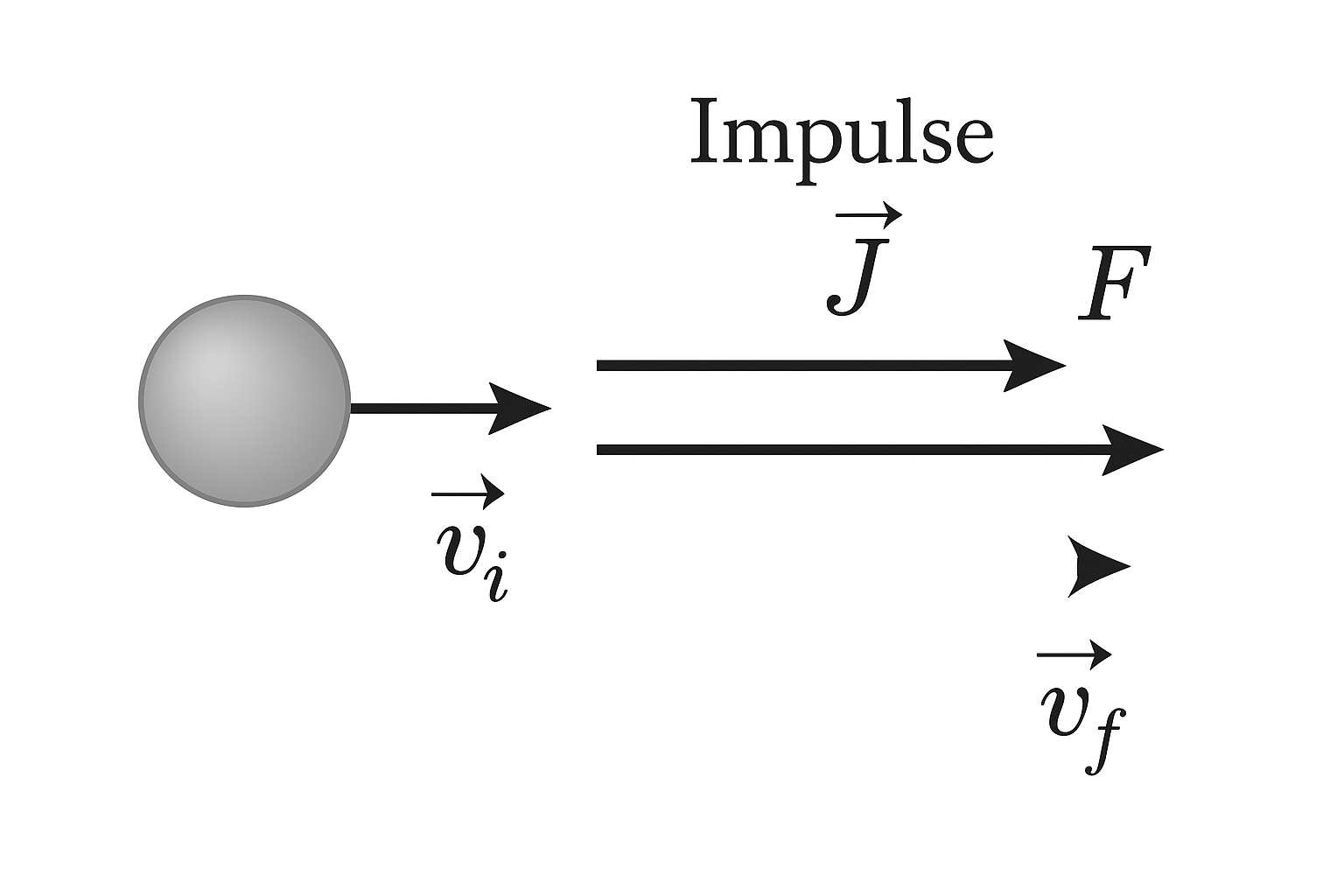Impulse-Momentum Theorem
Conceptual Definition
Impulse is the effect of a force acting over time. Think of impulse like hitting a baseball coming at you. To redirect the baseball, you have to hit it and change it's momentum. The contact might look instantantaneous, but there is still a duration of contact (even if its in miliseconds). When a force acts on an object, it changes the object's momentum. This leads to the impulse-momentum theorem:
Impulse as a Time Integral
For forces that vary with time, impulse is the integral of force with respect to time:
As you can see from this formula, impulse does NOT depend on position, only the force and time.

This integral represents the area under a force-time graph. For constant force, this simplifies to:
Calculus-Based Derivation
Starting from Newton’s Second Law in vector form:
Integrate both sides over time:
Therefore:
Units and Direction
Impulse has the same units as momentum: \(\text{kg} \cdot \text{m/s} = \text{N} \cdot \text{s}\). It is a vector quantity — its direction is the same as the direction of the net force.

Applications
- In collisions, impulse tells us how much momentum is transferred.
- Airbags increase time of impact, reducing force via the same impulse.
- In rockets, momentum changes due to impulse from exhaust force over time.

Example (Calculus)
A particle experiences a force described by \( F(t) = 6t \) N for \( 0 \leq t \leq 3 \) s. Find the impulse delivered.
If the particle has mass 3 kg and was initially at rest, its final velocity is:
Summary
- Impulse is the integral of force with respect to time.
- Impulse changes momentum: \( \vec{J} = \Delta \vec{p} \)
- Force-time graphs provide a powerful visualization tool for impulse.
- Use vector and integral notation for full AP Physics C analysis.
Key Comparisons
| Quantity | Definition | Units | Formula |
|---|---|---|---|
| Impulse \( \vec{J} \) | Change in momentum or area under \( \vec{F}(t) \) curve | \( \text{N·s} = \text{kg·m/s} \) | \( \vec{J} = \int \vec{F}(t)\,dt \) |
| Momentum \( \vec{p} \) | Product of mass and velocity | \( \text{kg·m/s} \) | \( \vec{p} = m\vec{v} \) |
| Force \( \vec{F} \) | Time rate of change of momentum | \( \text{N} = \text{kg·m/s}^2 \) | \( \vec{F} = \frac{d\vec{p}}{dt} \) |